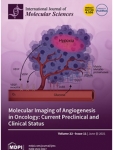
Supervisory institution:
National Science Center
Project manager:
Prof. Danuta Kruk (projekt partnerski, Lider – Uniwersytet Warmińsko-Mazurski w Olsztynie), Prof. Stefan Jurga
Budget:
818 280,00 PLN
Start date:
01.07.2020
Duration:
36 months
Contract number:
UMO-2019/35/B/ST8/02550
Majority of super – ionic inorganic materials exhibits ionic diffusion on the level of typical solids. Only a few of thousands of superionic inorganic materials exhibit ionic diffusion that makes them candidates for potential electrolytes - examples of such compounds are: Li10GeP2S12, Li7P3S11, Li7La3Zr2O11, Li3PS4 or LiBH4. The intriguing point is that these few materials exhibit extraordinary fast diffusion and high conductivity – higher by several order of magnitude compared to standard solids and comparable with the ionic diffusion in liquid electrolytes. The reason of this effect is not understood. The lack of understanding of the diffusion mechanisms is a consequence of the rather unfortunate situation in the electrolyte science - majority of the studies is just devoted to synthesis of new compounds for electrolytes and electrodes and to their electrochemical characterization. There is, however, a growing awareness that further progress in the electrolyte systems heavily relays on a thoroughgoing understanding of the mechanisms of ionic diffusion on molecular (ionic) level. The project combines a unique experimental methodology with advanced theoretical modelling. It attempts to give a deep insight into an essential subject of fundamental science – mechanisms of ionic motion in solids – being at the same time of utmost importance for the battery technology. Unravelling the physical reasons of extraordinary ionic transport is an important step for tailoring novel solid-state electrolytes. In order to reveal the mechanisms of ionic diffusion and visualise the process on the ionic level, unique experimental and theoretical tools are required. Motivated by the prospects of battery design with solid electrolytes we shall apply Nuclear Magnetic Resonance (NMR) relaxometry accompanied by other NMR methods and impedance spectroscopy to understand the conditions required for fast, long-range ionic diffusion and, hence, fast conductivity. Standard NMR relaxation experiments are performed at a single magnetic field (resonance frequency) versus temperature. Here the studies will be carried out in a remarkably broad range of magnetic fields encompassing five orders of magnitude: from about 30μT to 3T (this means from about 1 kHz to 120 MHz, referring to 1H resonance frequency) versus temperature and pressure. Frequency dependent relaxation studies possess the exceptional potential to reveal the underlying mechanisms of ionic motion (not only the time scale). As spin relaxation is a quantum-mechanical phenomenon, to fully profit from the remarkable experimental opportunities, a parallel development of spin relaxation models dedicated to solid electrolytes constitutes a part of the project. One could cite numerous examples of misleading conclusions drawn from NMR relaxation experiments interpreted in terms of incorrect theoretical models. The common disappointment stems from the lack of understanding that in classical relaxation experiments performed at a single, high frequency one is not able to probe long range translation motion, but only local, fast dynamics that is not related to the conductivity – fast local motion is not a promise of large conductivity. As a part of the project we plan a unique experiment: we shall perform NMR relaxometry studies in the full frequency range changing not only temperature, but also pressure. Pressure causes changes in the structure in terms of inter-ionic distances. Correlated motion involving multiple ions requires large activation volume – this implies that correlation effects should be considerably suppressed under high pressure. In this way we will be able for the first time to directly verify the concept of correlated ionic dynamics leading to highly enhanced conductivity. The project combines unique experimental methodology with advanced theoretical modelling. It attempts to give a deep insight into a very important subject of fundamental science – mechanisms of ionic motion in solids – being at the same time of utmost importance for the battery technology.
Obszar badawczy:


